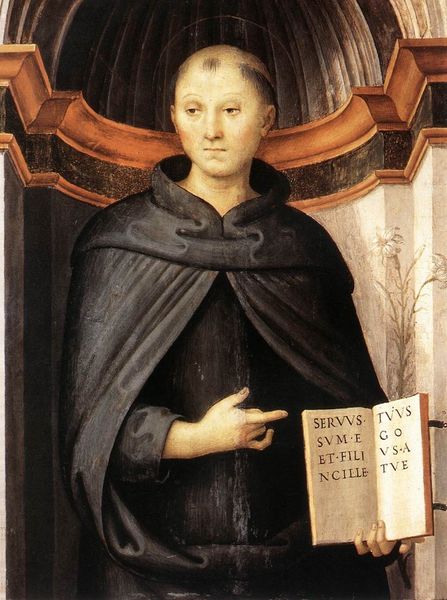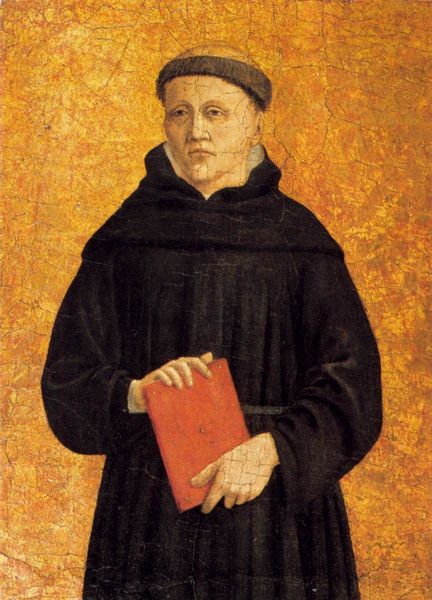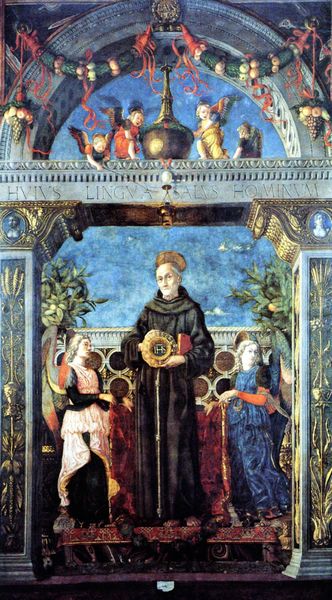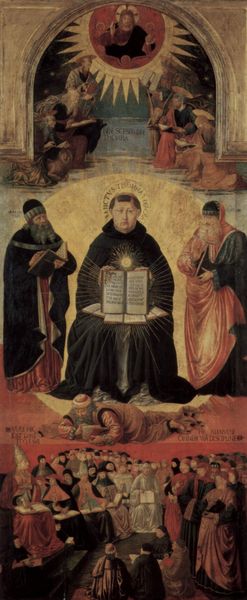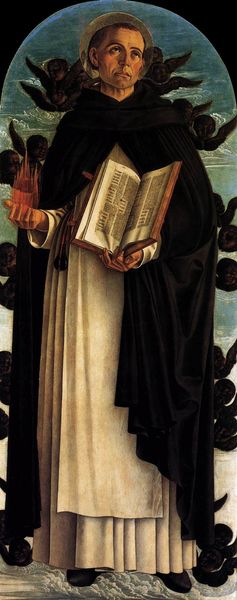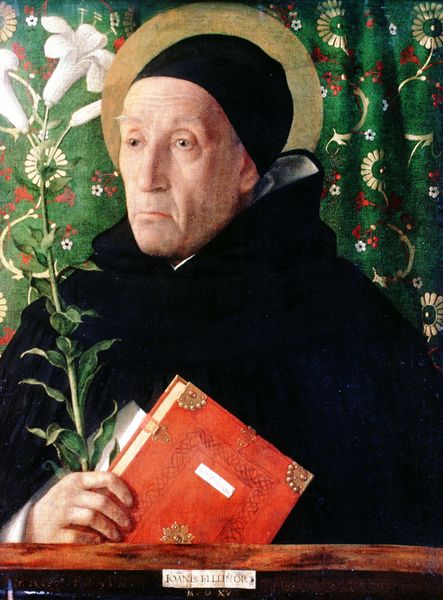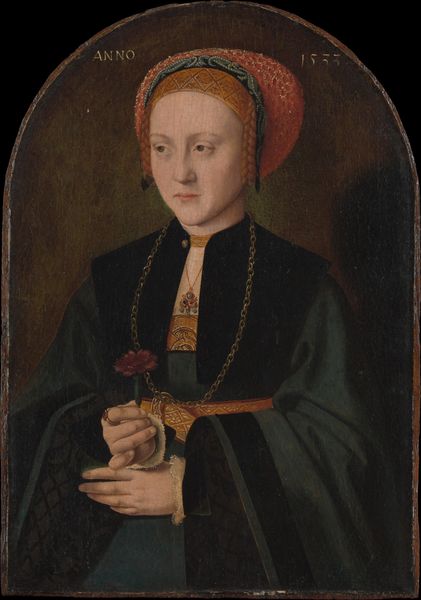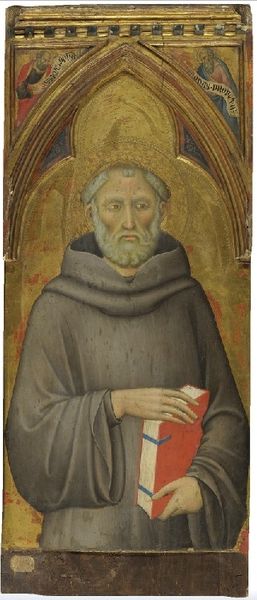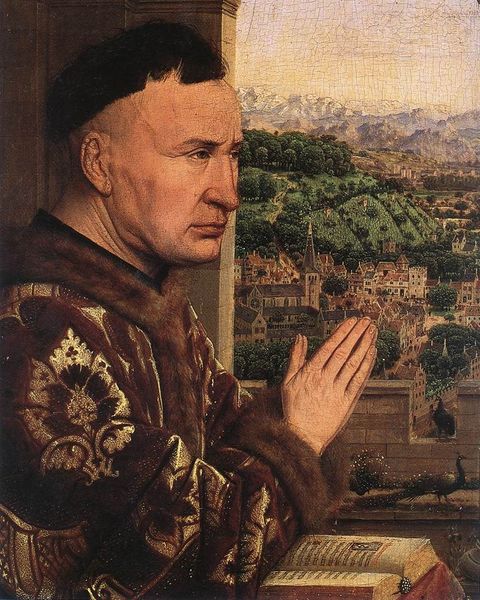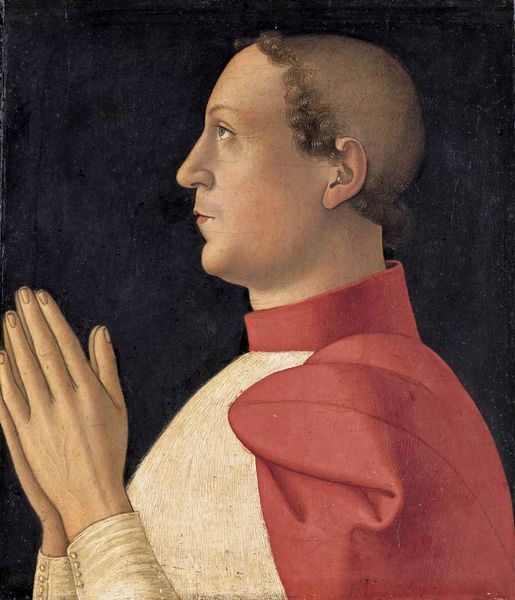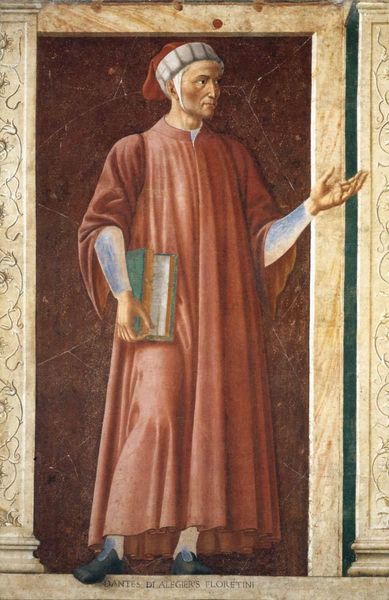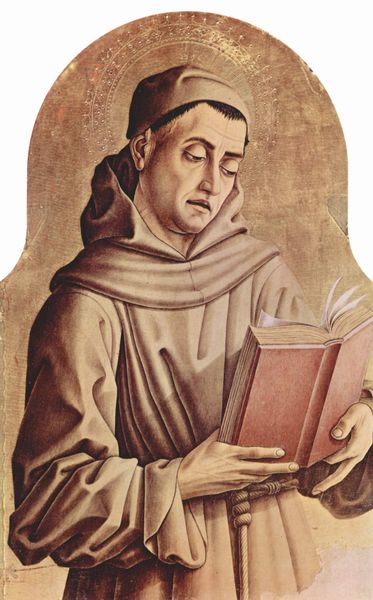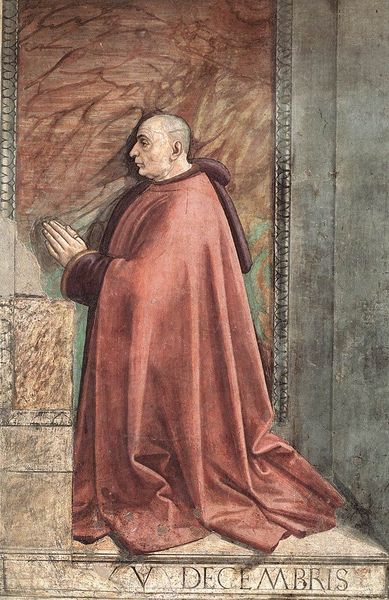
painting, oil-paint
#
portrait
#
narrative-art
#
painting
#
oil-paint
#
oil painting
#
italian-renaissance
#
portrait art
Copyright: Public domain
Editor: We're looking at Pinturicchio's "Portrait of the Donor," an oil painting from 1504. It's striking how somber and prayerful the figure appears, set against this incredibly detailed background of what seems to be a coastal city. I wonder, what do you find most compelling about this piece? Curator: The thing that gets me every time is how Pinturicchio merges the sacred with the specific. This isn't just any portrait; it’s a plea. The inclusion of "Rhodi" signals Rhodes, under siege at that time. He isn't just showcasing piety, but real-world concern for the bastion of Christendom. And look at how he contrasts the figure's dark clothing against the detailed cityscape and soft blues of the sea; the overall effect emphasizes the sitter's humility against a world that demands attention. What do you make of the details like the sailing ships? Editor: They add a layer of activity, even urgency, almost like a call to action beyond prayer. It’s like saying, “We need help!” Curator: Exactly! They’re not there for decorative purposes. Each element has a weighted intention. You can sense the tension between individual devotion and public duty, which Renaissance donors navigated masterfully in commissioning works such as this. So what is your reading of the message? Editor: It seems this painting has multiple messages; a blend of personal devotion and urgent, public appeal to support Rhodes. It definitely makes you think beyond just admiring it. Curator: Agreed. I like the idea that art can serve both spiritual and political purpose! A lasting combination that many artists attempted to explore after.
Comments
No comments
Be the first to comment and join the conversation on the ultimate creative platform.
